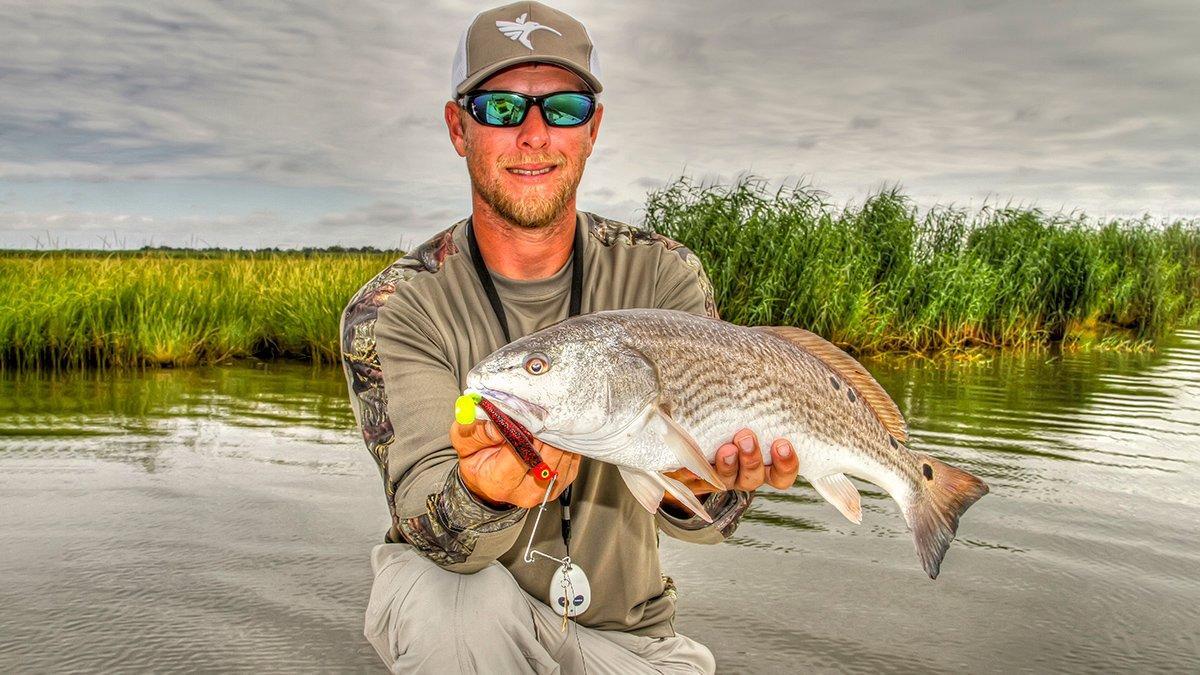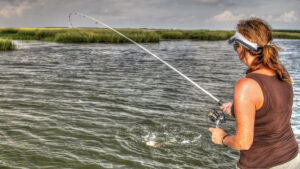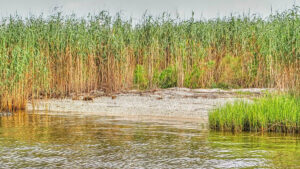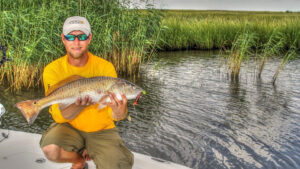No doubt, the sprawling habitat of the Mississippi Delta marshes presents an enticing tapestry of seemingly homogenous fishiness. So vast is this inimitable inshore fishery that the very thing redfish anglers find attractive also becomes their vexation. But knowing how to fish for redfish on the Mississippi Delta doesn’t have to be difficult.
In short, “where to start” is the premise most puzzling for those seeking to unlock this piscatorial treasure chest.
Those who’ve fished the Delta know that most of this amazing area can, in fact, hold reds at one time or another. However, the fish won’t necessarily park on every shell bar, point, pond drain and Roseau cane clump.
So, if you’re pondering a visit, embrace this truth: While redfish are surely a versatile lot, they do have their preferences.
Tide is the most obvious ingredient, but there’s more to it than just highs and lows. Understanding the variables of water flow, clarity and feeding motivations will put you on course to a bent rod.
THE RIGHT NEIGHBORHOOD
During a past trip out of Cajun Fishing Adventures in Buras, La., Capt. Cody Obiol noted 5 redfish-friendly marsh features he seeks:
- Points — Natural transition areas that redirect water, gather forage species and – if large enough – offer some level of wind break. Points can be subtle protrusions of a grass line or the “elbow” found on the inside edge of a bend inside a pond drain.
- Pockets — Modest as they may seem, those random little pockets in the grass or cane that seem just big enough for a single redfish will often hold a good one. Sometimes, they’re just relaxing in a defensable position, but when the tide’s washing forage past their position, you can bet these opportunists will be watching for the next belly-filler. As Obiol ran us down a crescent-shaped bank of low Roseau cane, I pointed to a particular little divot and said, “That’s just the kind of spot where I’d expect a redfish to be sitting.” Moments later, my spinnerbait met with a violent explosion that validated my point.
- Funnels — Call them gaps, breaks or pinch points; narrow passages in grass lines or Roseau cane represent promising areas, as water flowing through brings all the usual benefits of temperature moderation, oxygenation and food sources. Paradise Plus owner, Anthony Randazzo showed me where breaks in the Roseau cane immediately tilt the odds in his favor. From his experience, breaks in the cane where current pushes through are the areas of much higher probability. Working the entire stretch of cane might produce a fish here and there, but focusing on the areas of greater dynamics typically yields better results.
- Changes — Obiol has found that a stand of Roseau cane butting against a grass line can create a prime redfish scenario. A couple factors play here. First, transitional banks are always attractive to fish because the different habitats often present different forage menus. But from a strategic standpoint, the Roseau typically grows farther into the water, so the edge between cane and grass typically forms a pocket that’s just right for a redfish.
- Shell beds — Occasional patches of shell bank, regardless of size, always merit a cast, as that hard bottom extending into the water tends to attract crabs and other redfish snacks.
FIND THE FOOD
While slowly traversing a marsh bank, Obiol offered some advice.
“As we work down this bank, look for any pushes, boils and head wakes,” he said. “If you see any mullet – throw at them. Also look for any signs of bait that’s scared.”
Typically, such disturbances are the work of redfish, so give every pocket, bend and runout a good gander and make a few casts anytime you spot the telltale dimples of baitfish. Can you catch reds where you do not spot baitfish? Sure you can. But these are gluttonous creatures that quickly loose interest in the empty fridge.
“The main thing you have to look for is bait – no bait, no fish,” said Capt. Billy Walbaum, of Paradise Plus Charters. “They’re not going to be there if there’s not a food source. That could be mullet, pogies or shrimp, but the food is the key.”
On a related thought, Obiol took a moment in our day to point out several egrets wading the shore of a grassy mud mound which he typically sees as a good sign for redfish seekers.
“Those birds will pick of the baitfish that run too close to the edge,” he said. “When you see birds wading the shorelines of the marsh that usually means that redfish are pushing the bait shallow.”
WHY IT WORKS
Experienced anglers know that fish will occasionally traverse the nondescript en route to their next objective. However, dialing-up the detail gives redfish more reason to hang, or at least pause there.
“After bait, the second thing I look for is something different,” Walbaum said. “You don’t want a straight, flat piece of bank. Look for points, indentions and drop-offs. Fish like edges. They like to be on something with some features.”
Now, the first thought here is ambush; and yes, redfish and to some degree, trout will definitely capitalize on prey ambling around a blind point. However, Walbaum points out that shoreline anomalies also serve another strategic benefit for predators.
“Baitfish like to travel in tight schools because it’s their only defense against predators,” he said. “With all those bodies moving together, it’s harder for predators to target an individual baitfish.
“I look for the shoreline anomalies because these spots break up the bait ball and the predator can zero in on one particular baitfish or shrimp.”
We’ll address the top redfish baits down the road, but for most marsh fishing, you’ll do fine with a spinnerbait with a black/chartreuse tail minnow body, a 1/8- to 1/4-ounce jig with a minnow or curly tail body, a topwater walking plug and a popping cork with a jig or shrimp below.
For Delta marsh fishing, check out www.cajunfishingadventures.com and www.paradise-plus.com.















